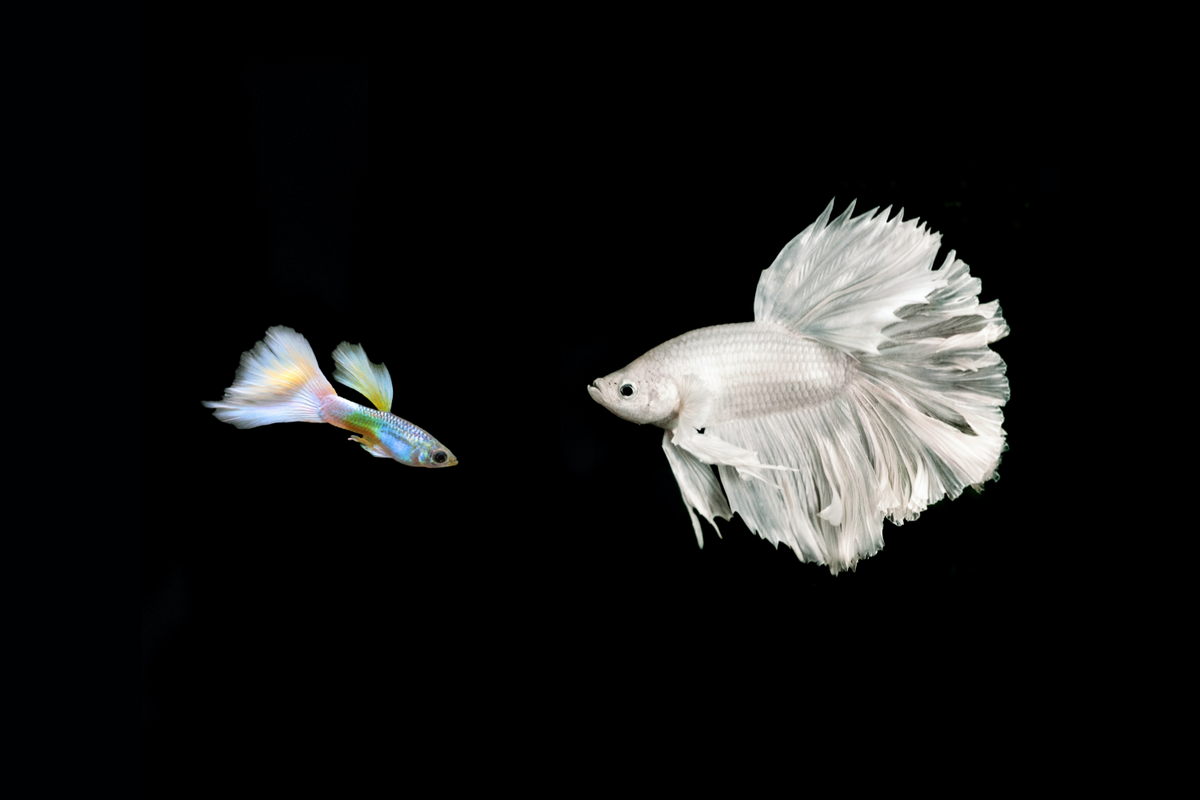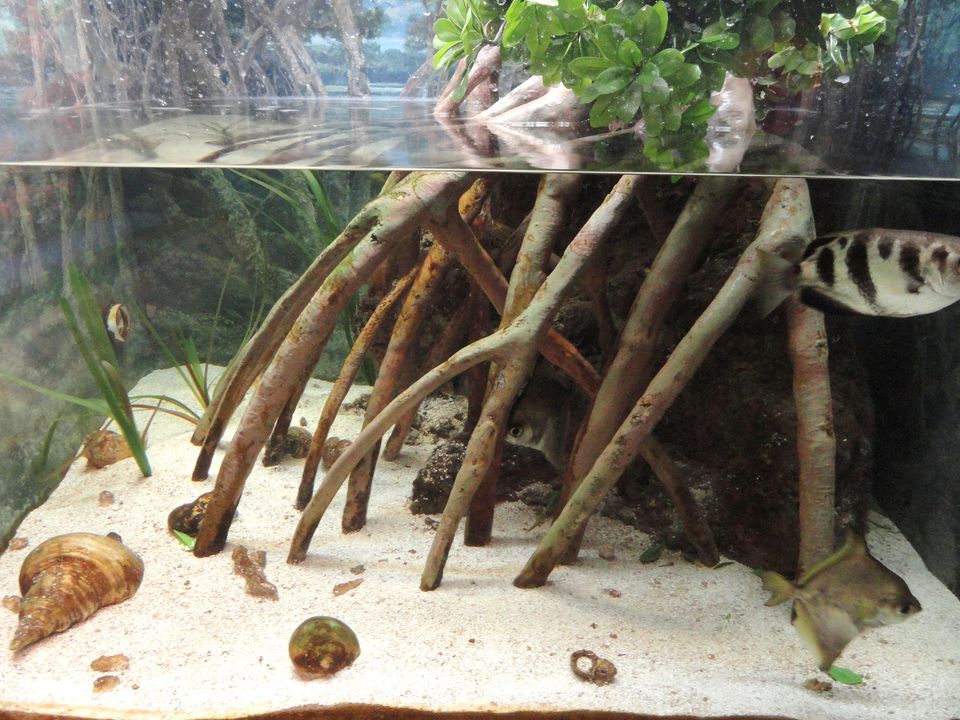Can Guppies live with Bettas? How to keep them together
Guppies and bettas are two popular types of freshwater fish that are often kept in home aquariums. Both species are known for their colorful appearance and their hardy nature, making them a popular choice for beginner fishkeepers.

Guppies and bettas are two popular types of freshwater fish that are often kept in home aquariums. Both species are known for their colorful appearance and their hardy nature, making them a popular choice for beginner fishkeepers. The short answer to the question is leaning towards YES. However, there are some important considerations to keep in mind when housing these two species together.
Compatibility
One of the main factors to consider when deciding whether to house guppies and bettas together is compatibility. In general, bettas are territorial fish and may become aggressive towards other fish that they perceive as a threat. This can be a problem when housing bettas with smaller, more docile fish such as guppies.
Bettas are known for their long, flowing fins, which can make them a target for aggression from other fish. In addition, bettas are prone to developing fin rot, a bacterial infection that can cause the edges of their fins to become frayed and disintegrate. Fin rot is often caused by poor water quality or injuries sustained from rough handling or fighting, and it can be a serious problem if left untreated.
However, it is possible for guppies and bettas to coexist peacefully in the same tank, provided that the tank is set up properly and the fish are introduced in a controlled manner. It's important to provide plenty of hiding places and visual barriers, such as plants or rocks, to help reduce the risk of aggression. It's also a good idea to introduce the guppies to the tank before the betta, as this can help establish the guppies as the dominant species and reduce the risk of aggression.
It's also a good idea to keep a close eye on the behavior of your guppies and bettas, and to separate them if necessary if aggression becomes a problem.
Tank size
Another important factor to consider when housing guppies and bettas together is tank size. Both species require plenty of space to swim and explore, and it's important to provide a tank that is large enough to accommodate both species.
As a general rule, it's recommended to provide at least 10 gallons of space per betta and 5 gallons of space per guppy. This means that a tank containing one betta and two guppies should be at least 20 gallons in size. It's also important to provide plenty of hiding places and visual barriers to help reduce the risk of aggression.
It's important to note that even a tank that meets these size recommendations may not be suitable for all situations. If you have a particularly aggressive betta or if your guppies are prone to nipping at the betta's fins, it may be necessary to provide even more space to reduce the risk of aggression. In these cases, a larger tank or a separate tank for each species may be a better option.
In addition to providing enough space for each individual fish to swim and explore, it's also important to provide enough space for all of the fish in the tank to coexist peacefully. This means that you should consider the total number of fish in the tank, as well as the size of the tank, when determining whether it is suitable for housing guppies and bettas together.
For example, a tank that is suitable for housing one betta and two guppies may not be suitable for housing two bettas and four guppies. In this case, a larger tank or separate tanks for each species may be a better option.
By considering these factors, you can help to ensure that your guppies and bettas have enough space to live happily and peacefully together.
Water conditions
Guppies and bettas have similar water condition requirements, and it's important to maintain a consistent and stable environment to ensure the health and well-being of both species. Both species prefer water that is slightly acidic to neutral (pH 6.5-7.5), and both require a temperature range of 72-82 degrees Fahrenheit.
It's important to perform regular water changes to remove waste and toxins from the tank and to use a high-quality water conditioner to remove chlorine and other contaminants from tap water. It's also important to monitor the levels of ammonia, nitrite, and nitrate in the tank, as high levels of these substances can be harmful to both guppies and bettas.
Ammonia and nitrite are toxic to fish and can be produced as a result of the breakdown of organic matter in the tank. Nitrate is less toxic but can still be harmful to guppies and bettas if the levels are too high. To keep the levels of these substances in check, it's important to perform regular water changes and to use a high-quality biological filter media to help break down organic matter.
Diet
Guppies and bettas have similar dietary needs, and both species can be fed a high-quality pellet or flake food that is formulated specifically for their species. It's also important to vary their diet with the occasional feeding of frozen or live foods, such as brine shrimp or bloodworms.
Both species should be fed small amounts of food once or twice a day, and it's important to remove any uneaten food from the tank to prevent it from decomposing and affecting water quality. Overfeeding can lead to obesity and other health problems, so it's important to be mindful of portion sizes.
When feeding your guppies and bettas, it's a good idea to use a feeding schedule to ensure that they are getting the right amount of food at the right times. A feeding schedule can help to prevent overfeeding and can also help to ensure that your fish are getting a balanced and varied diet.
By following these guidelines, you can help to ensure that your guppies and bettas receive the nutrients they need to stay healthy and thrive.
In conclusion, while guppies and bettas can coexist peacefully in the same tank, it's important to take steps to ensure that the tank is set up properly and that the fish are introduced in a controlled manner. Providing plenty of hiding places and visual barriers, maintaining a consistent and stable environment, and feeding a high-quality diet can help to reduce the risk of aggression and ensure the health and well-being of both species.
It's also important to monitor the behavior of your guppies and bettas and to separate them if necessary if aggression becomes a problem. By following these guidelines, you can help to create a harmonious and thriving aquatic environment for your guppies and bettas.




